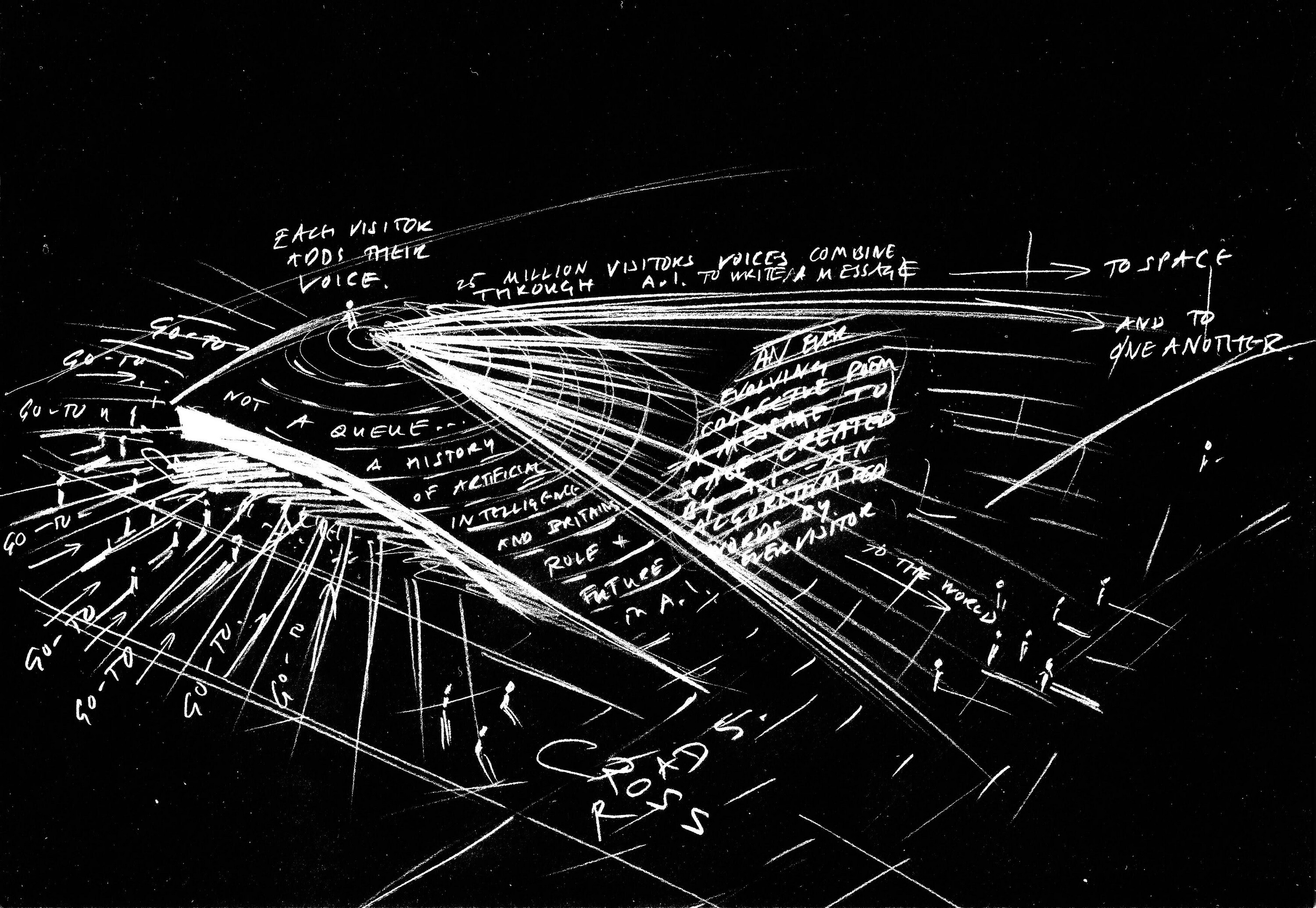The UK Pavilion, created by leading artist and designer, Es Devlin, will be launched on 1 October 2021 at Expo 2020 Dubai.
Shaped like a giant wooden conical musical instrument, the Poem Pavilion gathers words donated by each visitor and uses an advanced machine learning algorithm to generate the cumulative collective poem which illuminates its twenty metre diameter façade.
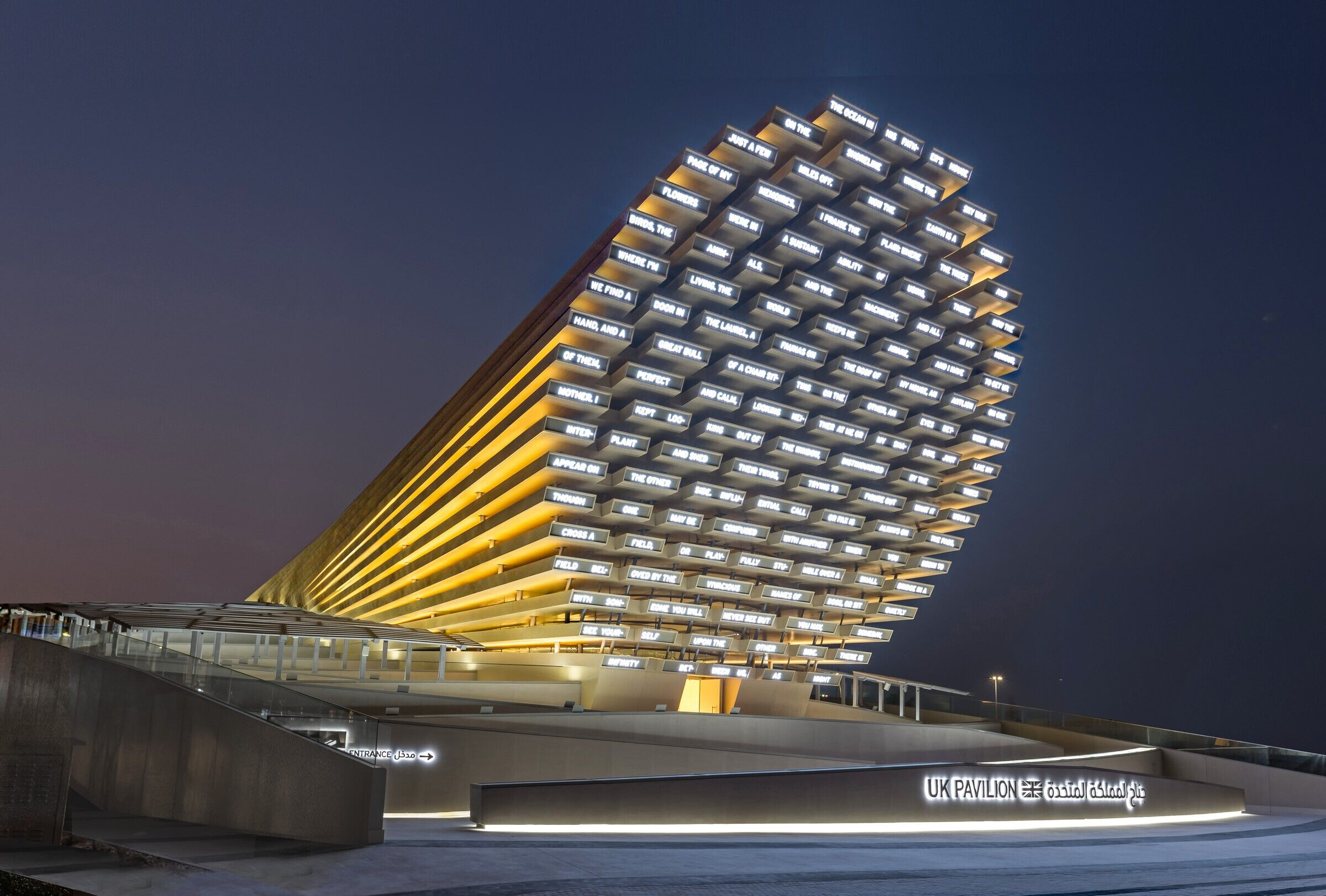
It’s the first time a UK pavilion has been designed by a woman since the inception of Expo in 1851. Devlin conceived the building to express Britain as a cultural gathering place, a meeting and melding of ideas and language from across the globe. Twenty five million visitors are projected to pass through Expo during its sixth month run, and each will be invited to donate a word at the ‘mouthpiece’ of the pavilion, then enter within the heart of the instrument where they will be surrounded by donated words glimmering in illuminated arabic and English, underscored by a soundscape gathered from multicultural choirs across the UK.

As visitors emerge through the façade of the pavilion they will pass through the twenty metre diameter composition of collective text: a new poem generated every minute.
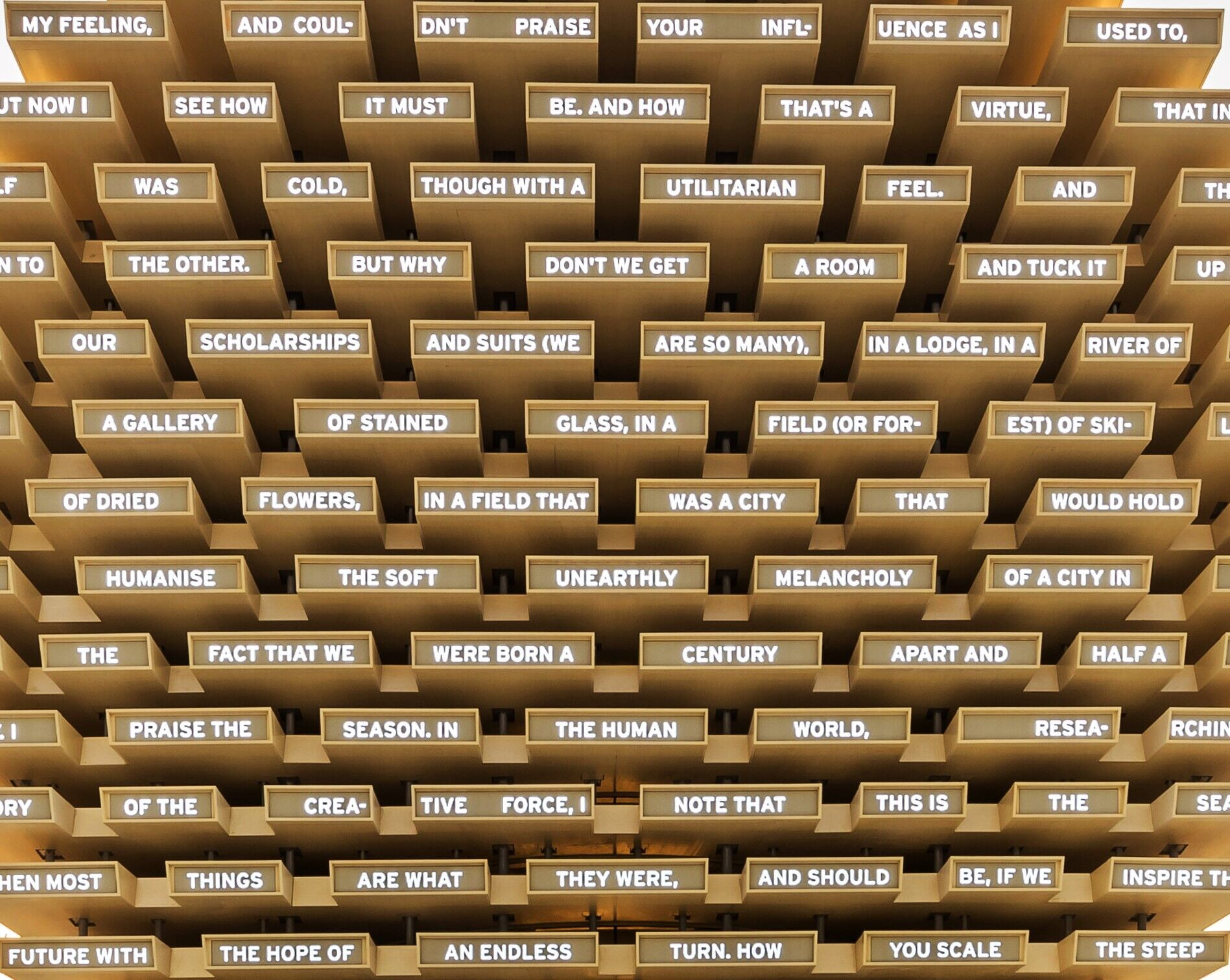
Devlin collaborated closely on the designs with structural engineers, Atelier One, environmental design consultants Atelier Ten, executive architects Veretec and creative agency Avantgarde. Guided by the engineers’ expertise in sustainable construction, the team chose cross laminated timber as the pavilion’s prime material. Sourced from sustainably managed European forests in Austria and Italy and championed by engineers as a sustainable alternative to concrete and steel, the cross laminated timber is crafted around LED tiles engineered in Belgium and manufactured in China, installed by local British and UAE teams, while the poetry generating algorithm has been developed by creative technologists in California. The pavilion has been conceived as an expression of cultural inclusivity and its execution is a feat of European and international collaboration.

Devlin’s exploration of machine generated poetry began with PoemPortraits at the Serpentine Gallery in 2016 in response to Hans Ulrich Obrist’s invitation to consider the idea of a ‘social sculpture’. In 2017 she continued her explorations at the Victoria & Albert Museum, turning their annual artist-conceived Christmas tree into a ‘collective carol’. In 2018, visitors fed words into the mouth of one of the lions in Trafalgar Square and watched the collective text projected up the length of Nelson’s Column.

The text generated by Poem Pavilion uses a machine learning model called GPT-2, a large language model defined by 1.5 billion parameters. GPT-2 was originally trained on a broad spectrum of internet text, and for this project it was fine-tuned on a diverse and carefully curated selection of over five thousand poems – comprising over two hundred thousand lines of poetry refined over months of iterative feedback from a diverse team of poetry curators.

Devlin says:
Algorithms are among us, they are an ever growing part of our culture, their output is based on what they are trained on and who trains them. The pavilion is at once an expression of the ideal of a culturally diverse Britain that I grew up with, tempered with our growing awareness of the part algorithms play in shaping the future of our culture.
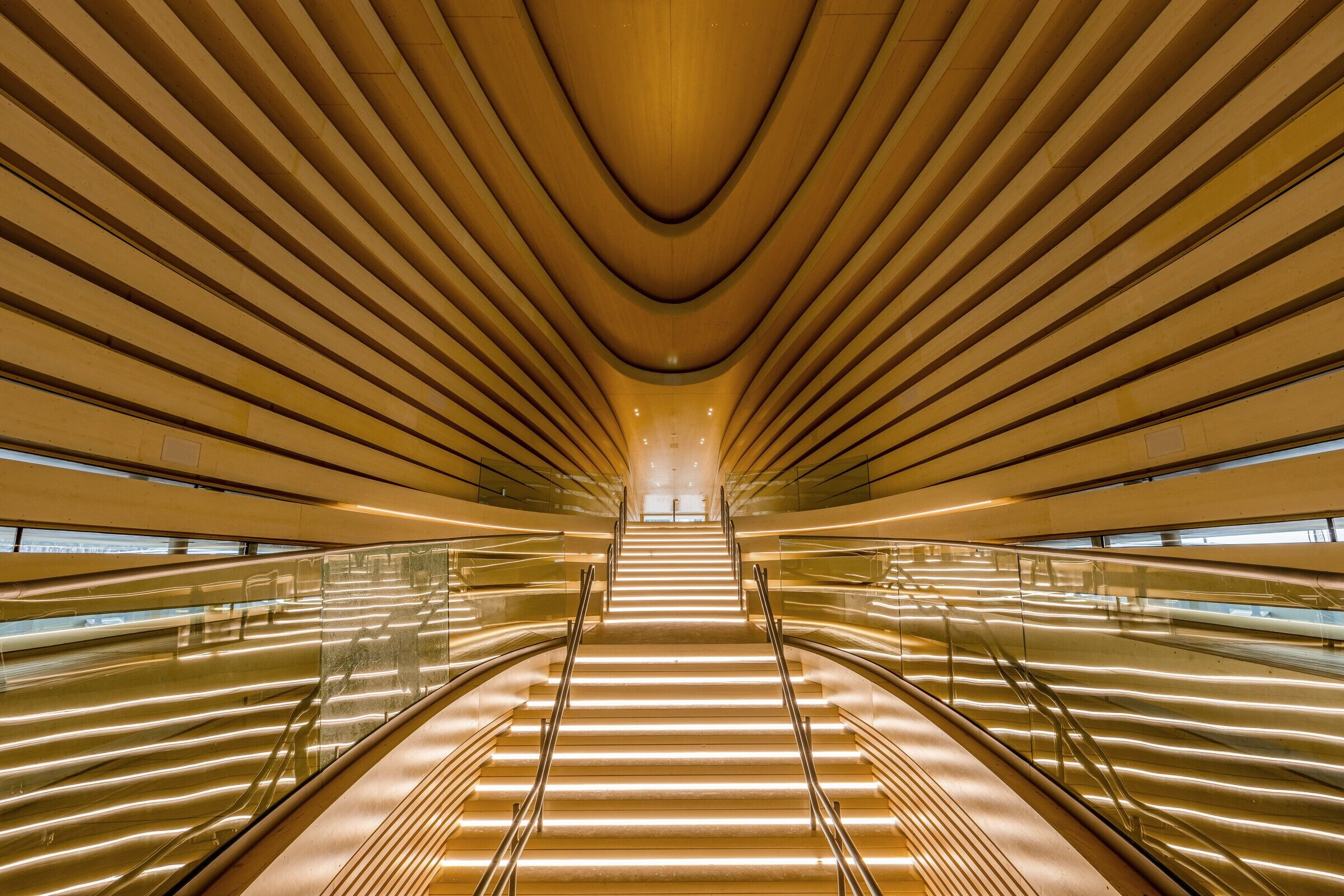
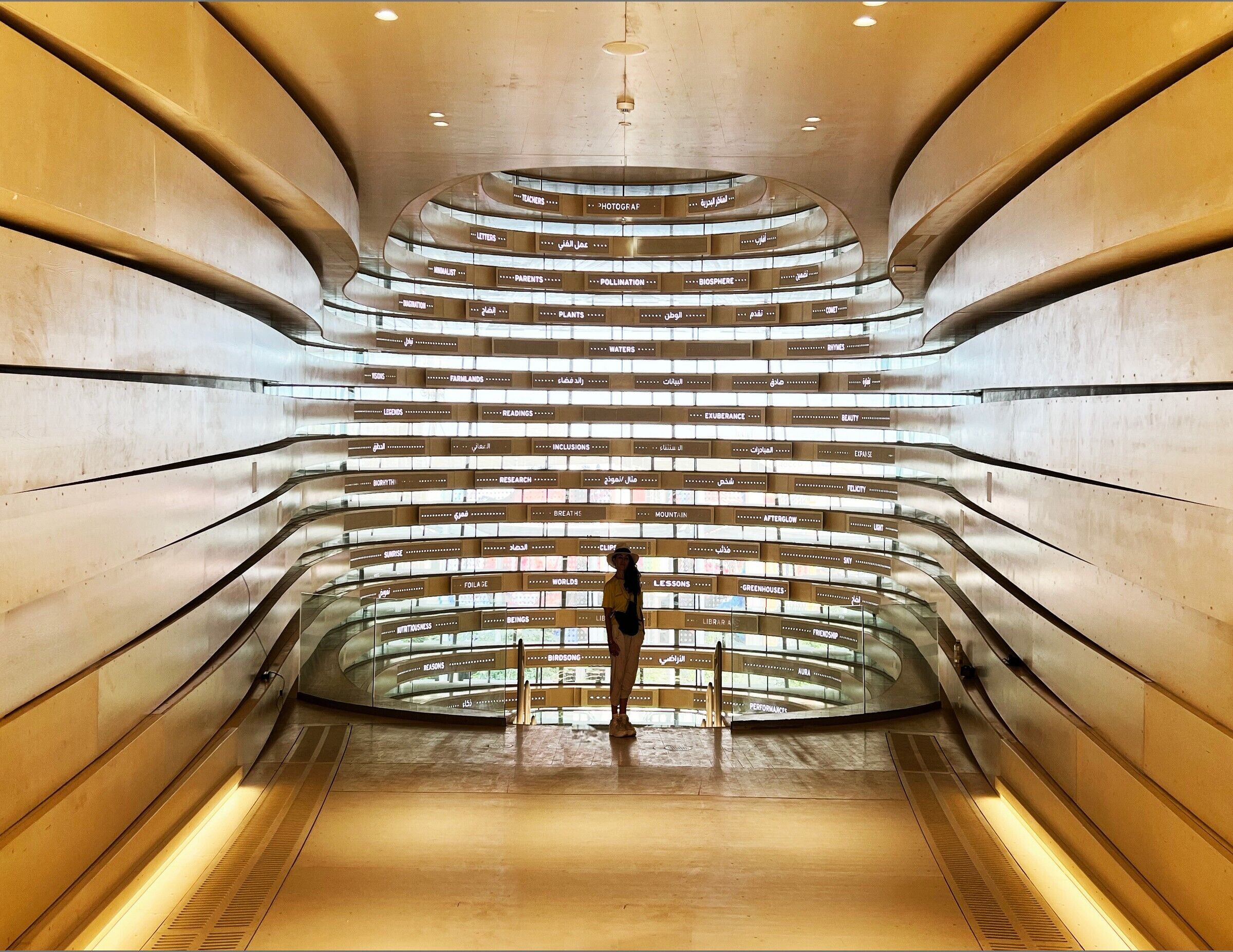
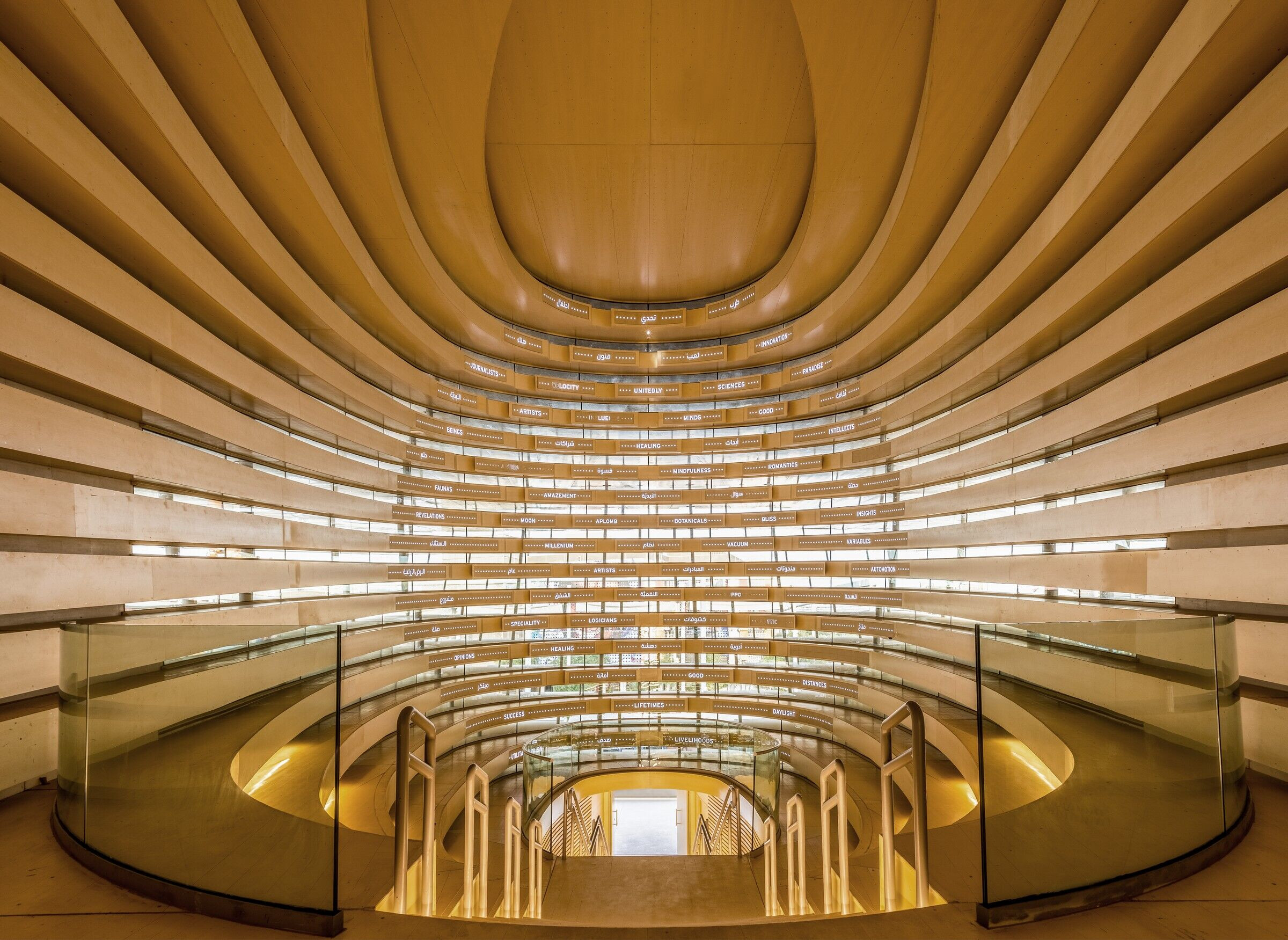
Material Used :
“The pavilion provided an opportunity to push the boundaries of C.L.T, and timber as a whole. It marks the use of C.L.T in both a non-conventional configuration and environment, paving the way for a broadening of sustainable design.
Key to C.L.T selection is its strength in two directions, a result of each lamination being at 90 degrees to each other, and its high strength-to-weight ratio. In addition, the use of C.L.T permitted a high degree of flexibility and precision in defining the more free-form internal space by C.N.C machining.”
“The sound of the pavilion, composed by Polyphonia, resonates throughout the architectural form like the chamber of an ancient instrument, a multichannel tapestry of music created from a collection of original recordings from across the UK and the globe. Bengali choirs from Bradford, sea shanties from Cornwall, Polish choirs from Norwich, computer-enabled synthesisers, traditional rhythms and contemporary body percussion to multiple layered instrumental melodies, each component of the soundscape has been carefully woven together to create an emotional landscape reverberating its uniquely distinctive multicultural identity.”
Speakers are made in Czech Republic
Amps made in USA.
